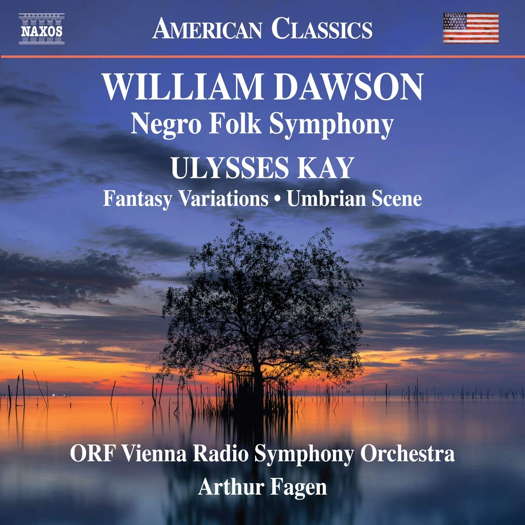- modernism
- choral music
- panpipes
- The Makropoulos Case
- Isaac Albéniz
- Salvador Bacarisse Chinoria
- H G Wells
- Gabon
 SPONSORED: A Seasoned Champion of New Music. Argentinian-American pianist Mirian Conti in conversation with Andrew Schartmann.
SPONSORED: A Seasoned Champion of New Music. Argentinian-American pianist Mirian Conti in conversation with Andrew Schartmann.
All sponsored features >>
 UPDATES: There's a new feature every day at Classical Music Daily. Read about the various ways we can keep in touch with you about what's happening here.
UPDATES: There's a new feature every day at Classical Music Daily. Read about the various ways we can keep in touch with you about what's happening here.

Impressive Dexterity
GERALD FENECH listens to orchestral music by American composers William Dawson and Ulysses Kay
'Arthur Fagen draws some immaculate playing from his Viennese Orchestra ...'
William Dawson (1899-1990) ran away from home at the age of thirteen to study music in Tuskegee Institute, Alabama. By the time he left in 1921 to further his studies in Kansas City and Chicago, this Institute had become an accredited degree-granting institution, and such was its lure that the composer returned in 1931 to establish and lead its music department - a move that changed both his focus and his ultimate legacy.
Dawson spent nearly three years composing his Negro Folk Symphony, completing it in 1934. Premiered by Leopold Stokowski and the Philadelphia Orchestra on 14 November of that year, the work was greeted with great euphoria but, for some unexplained reason, the symphony was soon consigned to oblivion. Undaunted, the composer did not lose heart and, following a trip to seven countries in West Africa, Dawson revised the work in 1952. Unsurprisingly, it was again Stokowski who recorded this new version, thus giving the piece a new revitalised push. This Naxos version is its third recording.
Listen — William Dawson: The Bond of Africa (Negro Folk Symphony)
(track 1, 2:56-3:53) © 2020 Naxos Rights (Europe) Ltd :
In a detailed study, John Andrew Johnson describes the work as 'masterful' on many levels, and each of its three movements, while cast in a traditional form, are ultimately not controlled by these formal structures, rather a continuous process of variation and development shape the course of the symphony. Dawson also introduces little-known spirituals in fragmentary form.
Listen — William Dawson: O, Le' Me Shine ... (Negro Folk Symphony)
(track 3, 3:46-4:42) © 2020 Naxos Rights (Europe) Ltd :
Ulysses Kay (1917-1995) was also a music educator, teaching at several universities, including a twenty-year career at the Herbert H Lehman College of New York. As a composer he was more prolific than Dawson, leaving for posterity approximately 140 works in different genres, including five operas as well as scores for film and television.
The Fantasy Variations were composed in 1963 after a commission by conductor Arthur Bennett Lipkin, who premiered the work on 19 November 1963. The piece might also be called 'Variations in Search of a Theme' since the actual theme does not appear until the end after an introduction and thirteen variations; still, the main feature of the piece is Kay's ability to employ dissonance with great expressiveness within a framework of textural and coloristic variety.
Listen — Ulysses Kay: Fantasy Variations
(track 4, 16:41-17:39) © 2020 Naxos Rights (Europe) Ltd :
Umbrian Scene (1963), despite its Italian suggestion, is highly Germanic in tone, and generally the music is lean and sombre, with thin melodic lines played in counterpoint with one another.
Listen — Ulysses Kay: Umbrian Scene
(track 5, 12:29-13:27) © 2020 Naxos Rights (Europe) Ltd :
Arthur Fagen draws some immaculate playing from his Viennese Orchestra; the challenging Kay pieces in particular are despatched with impressive dexterity. Detailed annotations and some sumptuous sound quality complete an exciting addition to the American music catalogue.
Copyright © 31 July 2020
Gerald Fenech,
Gzira, Malta

CD INFORMATION - WILLIAM DAWSON: NEGRO FOLK SYMPHONY
FURTHER ARTICLES ABOUT THE USA


